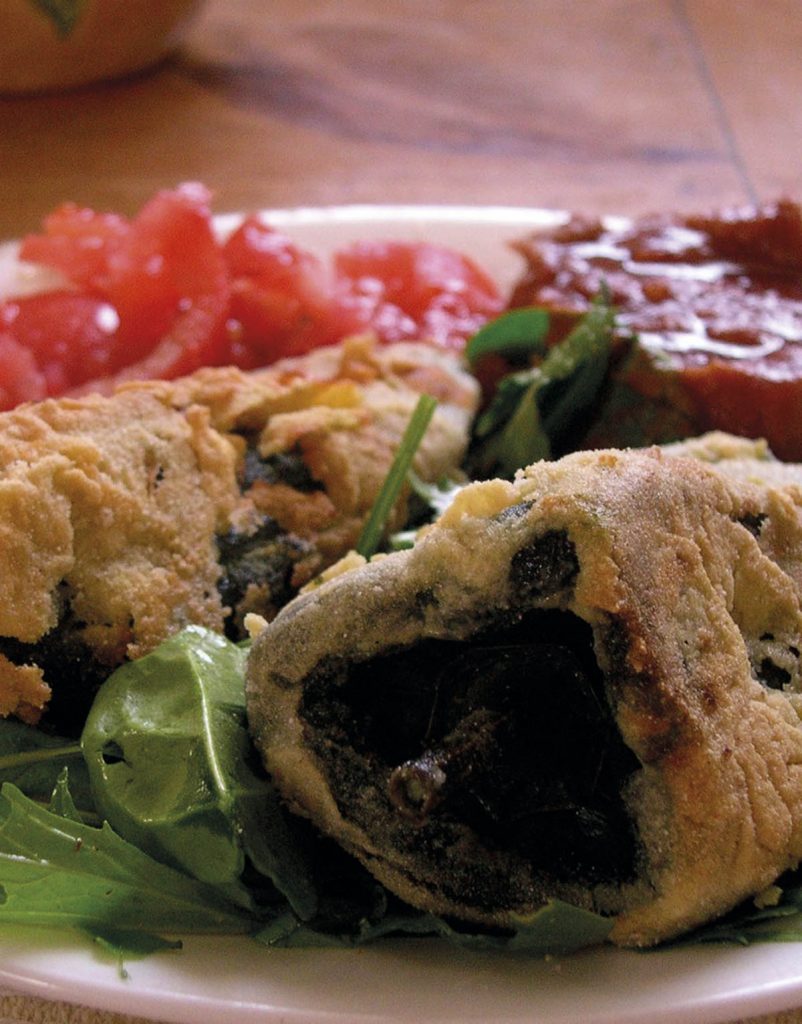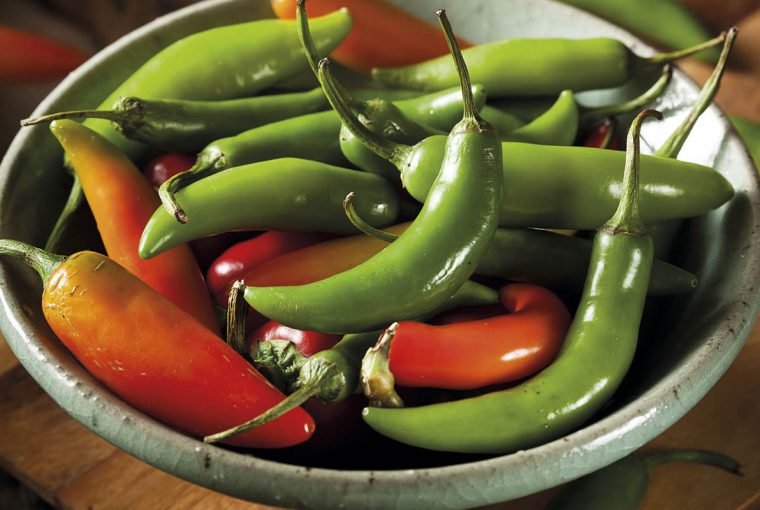Differing from popular belief, the vast majority of dishes in Mexican cuisine are not overly hot; they are lightly seasoned with mild chili peppers, or Chiles.
Chili peppers of every different color, size, shape and taste are everywhere, and are the trademark to one of the planets most favored cuisines. In Mexico they grow over a hundred and sixty different varieties.
The heat level of chiles varies greatly from very mild to scorching hot. Cutting open and removing the membrane and seeds, where most of the capsaicin resides, takes heat out of the chile, as does roasting before using. Natural or pickled chiles are often hotter than the same varieties that have been roasted.
Poblano, jalapeño, and serrano peppers are some of the most widely used kinds. The poblano is the mildest, followed by the jalapeño. The serrano pepper can be extremely hot and it’s popular in cooked dishes, not to mention salsa and guacamole. This can be very hot and is not for everyone, only those who can deal with the high heat. Jalapeño peppers are probably the most popular of all chiles with a heat level that is right in the center of the spectrum, and the versatility that the chiles provides.
Some basic safety procedures should be observed but, in general, prepping peppers for use is basic. To prevent exposure to the eyes and skin, it is prudent to wear gloves when touching hot peppers. Any work areas that come in contact with peppers like hands and utensils need to be thoroughly cleaned.

Roasting removes some of the heat out of the Chile and gives it rich flavor and texture. A BBQ grill or open fire, under the broiler in the oven, or on the stovetop are perfect for roasting the chiles. The procedure is uncomplicated, and really worth the endeavor. As the exterior begins to char, the chiles will soften.The exterior on the other hand may become very charred. Immediately after roasting, the chiles are put in a paper or plastic bag, and the resulting steam generated assists the skin in easily falling off.
The roasted peppers are ready for use in your favorite dish. Dice finely or slice thin and employ as a garnish on your favorite salads and soups. Add to fresh homemade traditional and modern style salsas and dips.
Pair with other veggies when creating tacos, burritos, enchiladas and fajitas dishes as well as your preferred Mexican sides and main courses. Include the flavorful roasted chiles into your every day culinary masterpieces. You are only limited to your creativity.
Article written by:
Tom A. Lingle
Writter
Culinary arts Network






